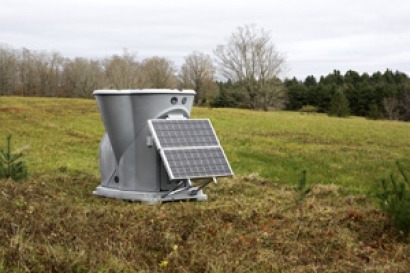
Vaisala now offers customers faster turnaround on the Triton Wind Profiler remote sensing device, bringing delivery times down to as little as two weeks. The increase in demand for Triton comes from a growing wind industry that has widely adopted remote sensing systems for measuring wind, allowing faster development, better financing, and more efficient wind farm operations.
The remote sensing system has been developed for versatility, ruggedness, mobility and ultra-lower power requirements with the aim of making it a dependable choice for collecting wind resource measurements. This will become increasingly important as wind farm developers continue their push into more remote territories around the world, where the installation of met masts is often impractical.
Wind developers use Triton to measure wind speeds at prospective wind farm sites because the remote sensor offers accurate data at the heights of the taller turbines now appearing on the market, while also helping developers overcome many other hurdles. The sensor’s mobility and online data recording enable developers to quickly collect the wind information needed to conduct assessments, and make decisions about viable sites - rather than waiting for met towers to be planned, permitted and constructed.
The same Triton features can be used by operators to help optimise their wind generation assets more cost-effectively. The sensor has many operational applications, such as indicative power performance testing, turbine wake studies and verification of met masts. In all of these cases, Triton can help operators perform a more robust analysis generally at a much lower cost and time commitment.
“We are witnessing a global shift toward remote sensing away from traditional met masts” said Pascal Storck, Head of Renewable Energy at Vaisala. “This is driven in part by new standards and acceptance for power performance testing, but primarily from the simple fact that remote sensing, especially SoDAR systems like Triton, offer a faster, more cost-effective means of reliably recording wind measurements for our industry’s ever-taller turbines.”
Mr Storck added that Vaisala has continuously been improving Triton manufacturing through the application of lean manufacturing principles. The company was able to scale up its capacity to meet increasing demand from customers, with the help of its considerable experience in the manufacture of high-quality weather measurement equipment over a period of 80 years.
Global wind capacity is growing year on year, and allocations for wind farm development are anticipated in even more remote and challenging locations in 2017. Triton aims to offer customers increasingly accurate wind resource data in order to meet that challenge by designing better and more efficient wind farms.
For additional information:

